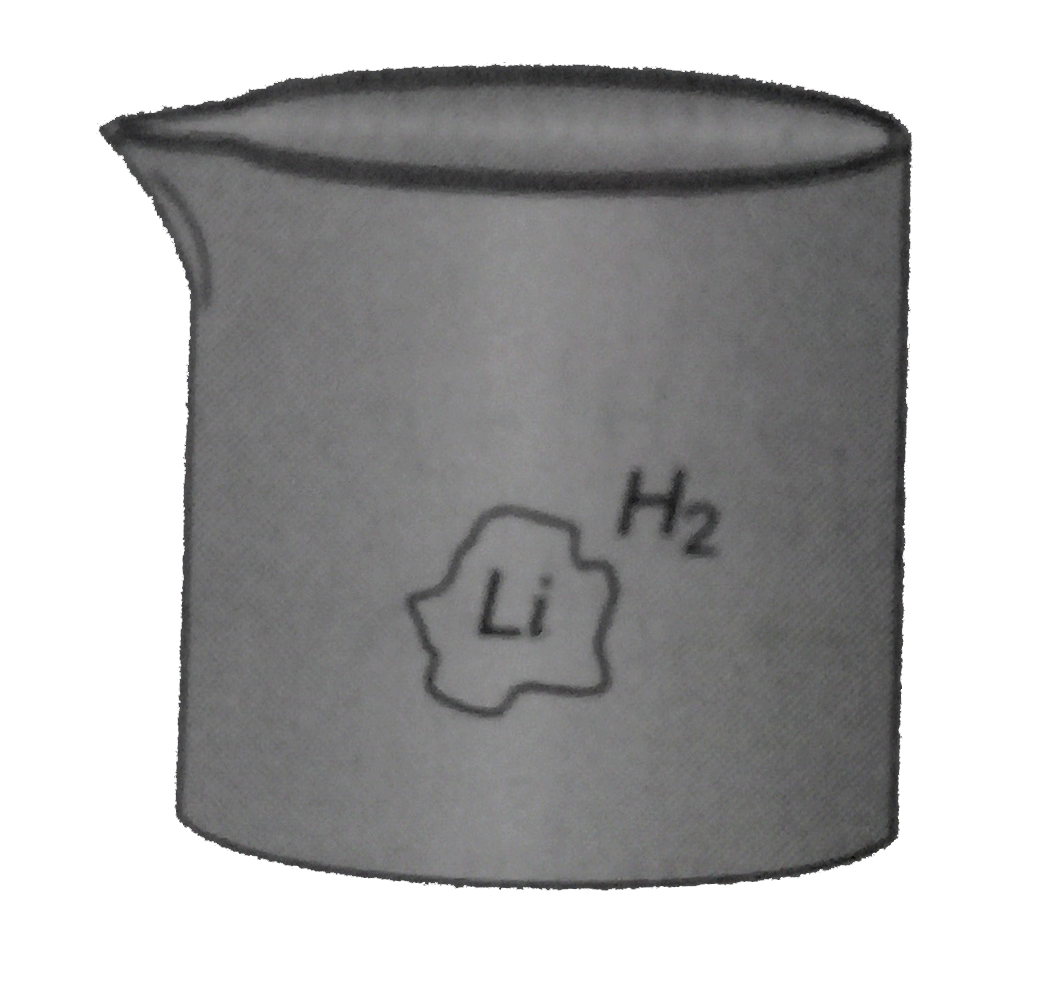The bombardment of Lithium with protons gives rise to the following reaction: .3Li7+.1H1→.2He4+.2He4+Q
The atomic masses of lithium, hydrogen and helium are : 7.016u,1.008u and 4.004u resp. Find the initial energy of each of α particle. Take 1a.m.u=931MeV.
To solve the problem, we need to find the initial energy of each alpha particle produced in the reaction of lithium with protons. We will follow these steps:
Step 1: Write down the reaction
The reaction given is:
3Li7+1H1→22He4+Q
Where Q represents the energy released in the reaction.
Step 2: Identify the atomic masses
The atomic masses provided are:
- Lithium (3Li7): 7.016u
- Hydrogen (1H1): 1.008u
- Helium (2He4): 4.004u
Step 3: Calculate the mass defect (Δm)
The mass defect is calculated using the formula:
Δm=(mass of reactants)−(mass of products)
In this case, the mass of the reactants is the sum of the masses of lithium and hydrogen, and the mass of the products is twice the mass of helium (since there are two helium nuclei produced).
So, we calculate:
Δm=(7.016u+1.008u)−2×(4.004u)
Calculating this gives:
Δm=8.024u−8.008u=0.016u
Step 4: Convert mass defect to energy
Using the conversion factor 1u=931MeV, we can find the total energy Q released in the reaction:
Q=Δm×931MeV
Substituting the value of Δm:
Q=0.016u×931MeV=14.896MeV
Step 5: Find the energy per alpha particle
Since the reaction produces 2 alpha particles, the energy per alpha particle is:
Energy per alpha particle=Q2=14.896MeV2=7.448MeV
Final Answer
The initial energy of each alpha particle is:
7.448MeV
The reaction given is:
3Li7+1H1→22He4+Q
Where Q represents the energy released in the reaction.
The atomic masses provided are:
- Lithium (3Li7): 7.016u
- Hydrogen (1H1): 1.008u
- Helium (2He4): 4.004u
The mass defect is calculated using the formula:
Δm=(mass of reactants)−(mass of products)
In this case, the mass of the reactants is the sum of the masses of lithium and hydrogen, and the mass of the products is twice the mass of helium (since there are two helium nuclei produced).
Δm=(7.016u+1.008u)−2×(4.004u)
Calculating this gives:
Δm=8.024u−8.008u=0.016u
Using the conversion factor 1u=931MeV, we can find the total energy Q released in the reaction:
Q=Δm×931MeV
Substituting the value of Δm:
Q=0.016u×931MeV=14.896MeV
Since the reaction produces 2 alpha particles, the energy per alpha particle is:
Energy per alpha particle=Q2=14.896MeV2=7.448MeV
The initial energy of each alpha particle is:
7.448MeV
Topper's Solved these Questions
- ATOMS AND NUCLEIBOOK - PRADEEPCHAPTER - ATOMS AND NUCLEIEXERCISE - (II) very short answer 16
1 Videos
- ATOMS AND NUCLEIBOOK - PRADEEPCHAPTER - ATOMS AND NUCLEIEXERCISE - (I) Short Answer questions 1
1 Videos
- COMMUNICATION SYSTEMSBOOK - PRADEEPCHAPTER - COMMUNICATION SYSTEMSEXERCISE - MODEL TEST PAPER-2
9 Videos
Similar Questions
If the mass of a proton,mp=1.008umass of a neutron mn=1.009u,then the binding energy of an α -particle of mass 4.003 u will be (Mev) (take 1a.m.u=931MeV)
View SolutionCalculate the energy released in MeV during the reaction .73Li+.11H→2[.42He] if the masses of .73Li,.11H and .2H4He are 7.018, 1.008 and 4.004 amu respectively.
View Solution
Knowledge Check
When a sample of solid lithium is placed in a flask of hydrogen gas then following reaction happened .11H+.3Li7→.2He4+.2He4. This statement is.
 .ATrueBFalseCMay be true at a particular pressureDNone of these
.ATrueBFalseCMay be true at a particular pressureDNone of theseWhat is the Q-value of the reaction?
1H+7Li→4He+4He
The atomic masses of 1H,4Heand7Li 1.007825u, 4.0026034u and 7.01600u, respectively.A17.35 Me VB18.06 Me VC177.35 Me VD170.35 Me VCalculate mass defect in the following reaction: H21+H31→He42+n10
(Given: mass H2=2.014amu,H3=3.016amu He= 4.004,n =1.008amu)A0.018 amuB0.18 amuC0.0018 amuD1.8 amu
how much energy is released in the following reaction:^7Li+p rarralpha+alpha.<br>A→msmasspf^7Li=7.0160uand that of ^4He=4.0026 u.
View SolutionFind the Q value of the reaction P+.7Li→.4He+.4He. Determine whether the reaction is exothermic or endothermic. The atomic masses of .1H,.4He and .7Li are 1.007825u,4.002603u, and 7.016004u, respectively.
View SolutionIn a nuclear reaction, α+7N14→X+p
When nitrogen atoms are bombarded by 7.7MeVα− particles, protons are ejected with a kinetic energy of 5.5MeV. The Q− value of the reaction is −1.26MeV
(a) Find the atomic mass of X in amu, identify the element X.
(b) Find the angle ϕ between the direction of motion of proton and α− particle.
Given the atomic mass of 1H1=1.00814a.m.u.,
atomic mass of 7N14=14.00752aμ, and atomic mass of 2He4=4.0038a.m.u.
View SolutionFind the binding energy of helium nuclei if masses of a helium nucleus, proton and neutronare 4.0015u,1.0073u and 1.0087u respectively
View SolutionConsider the nuclear reaction, 1H2+1H2→2He4+Q . What is the value of Q if mass of 1H2=2.0141u and mass of 2He4 = 4.0024 u.
View Solution
